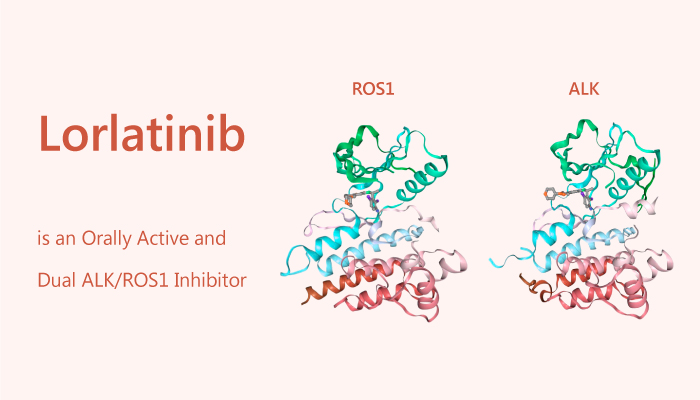Oncogenic c-Ros oncogene1 (ROS1) fusion kinases have been identified in a variety of human cancers and are attractive targets for cancer therapy. The MET/ALK/ROS1 inhibitor has demonstrated promising clinical activity in ROS1 fusion-positive non-small cell lung cancer. Receptor tyrosine kinases (RTKs) are vital conduits of extracellular signals that direct cell growth and survival pathways. Specifically, ROS1 is a distinct receptor with a kinase domain. Besides, it is phylogenetically relevant to the anaplastic lymphoma kinase/lymphocyte-specific protein tyrosine kinase (ALK/LTK) and insulin receptor (INSR) RTK families. Moreover, This suggests that tyrosine kinase inhibitors for these receptors could have cross-activity against ROS1. Furthermore, ALK is a member of the insulin receptor (IR) subfamily of receptor tyrosine kinases. It is primarily expressed in adult brain tissue and plays an important role in the development and function of the nervous system. Lorlatinib (PF-06463922) is a selective, orally active, brain-penetrant and ATP-competitive ALK/ROS1 inhibitor.

Lorlatinib (PF-06463922) is a selective, orally active, brain-penetrant and ATP-competitive ALK/ROS1 inhibitor. Meanwhile, Lorlatinib has Kis of <0.025 nM, <0.07 nM, and 0.7 nM for ROS1, wild type ALK, and ALKL1196M, respectively. In addition, Lorlatinib has anticancer activity. PF-06463922 exhibited subnanomolar cellular potency against oncogenic ROS1 fusions and inhibited the crizotinib-refractory ROS1G2032R mutation and the ROS1G2026M gatekeeper mutation in vitro. In vivo, PF-06463922 showed marked antitumor activity in tumor models expressing FIG-ROS1, CD74-ROS1, and the CD74-ROS1G2032R mutation. Furthermore, PF-06463922 demonstrated antitumor activity in a genetically engineered mouse model of FIG-ROS1 glioblastoma. Nonetheless, PF-06463922 has combined broad-spectrum potency, central nervous system ADME, and a high degree of kinase selectivity. All in all, PF-06463922 is a selective, orally active, brain-penetrant and ATP-competitive ALK/ROS1 inhibitor.
References:
Zou HY, et al. Proc Natl Acad Sci U S A. 2015 Mar 17;112(11):3493-8.